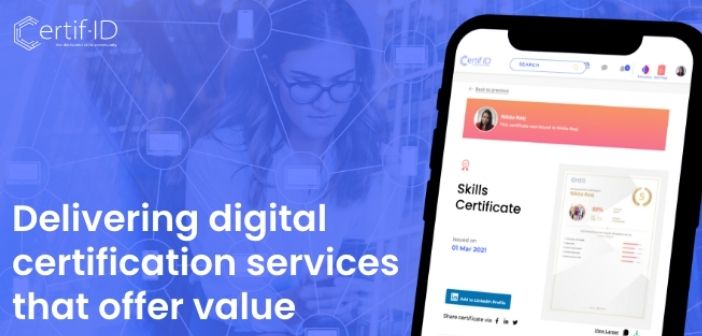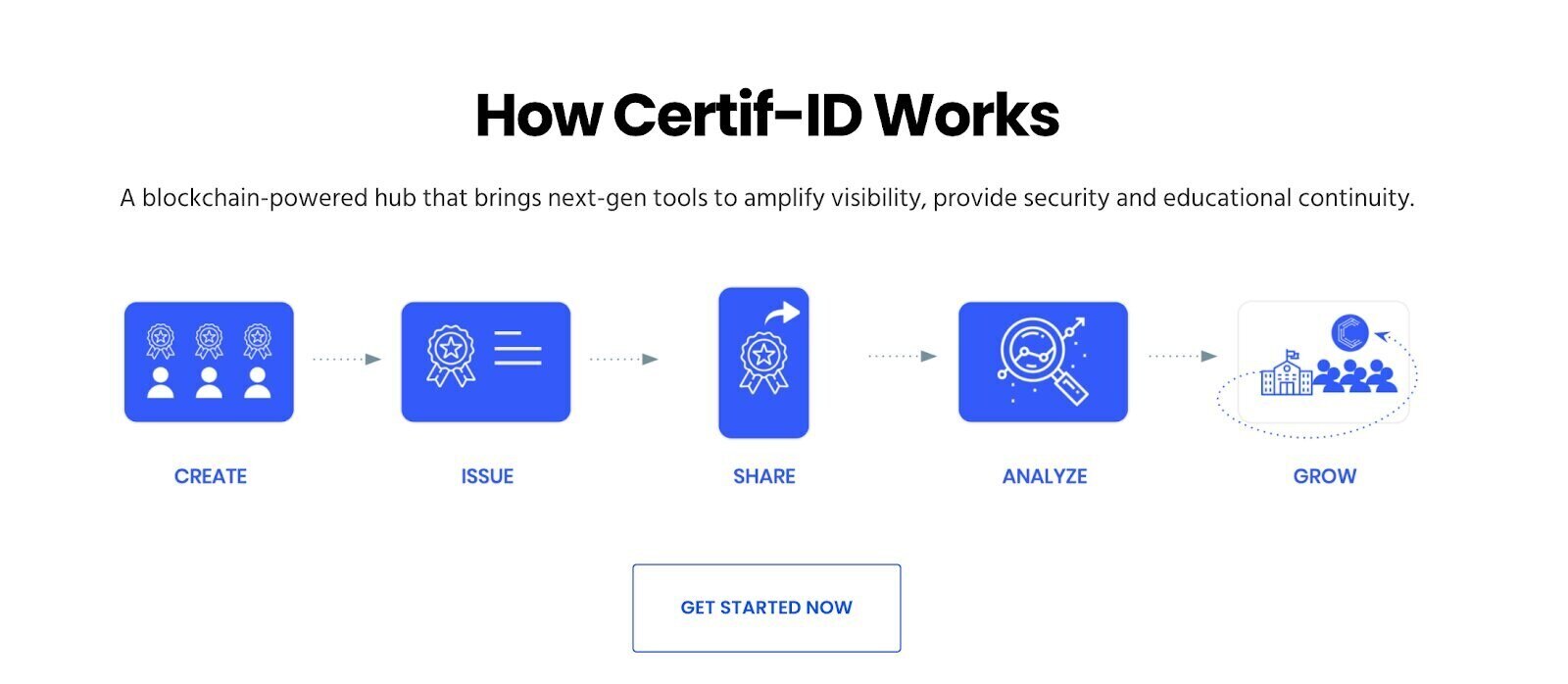One question that we’ve been asked many times is, ‘can blockchain technology be the one-stop solution when it comes to identity verification in education?’ The answer is YES. To know how and why, read on.
As the education sector relies heavily on error-prone manual intervention for storage, access, and sharing of critical academic data, it certainly can be the solution, thanks to the innate sense of security, traceability and transparency it brings to operations.
The word blockchain can be split into two words;
- Block which consists of a transaction or record
- Chain is the unbreakable link distributed across the internet
Together, blockchain is a series of blocks that are linked in a way that the blocks cannot be modified. If you’re wondering how this is possible.
Blockchain and its workings defined with examples
Then imagine you’re issuing a student his or her degree certificate on blockchain. The first time you issue the certificate a block (Block A) is created, after a couple of months, if you make a change to this certificate and re-issue it, then a new block (Block A.1), which is the copy of the previous block along with new changes is created.
So, everytime you make a change, re-issue or revoke the certificate a new block along with previous data is created. Also, in this process all the previous blocks created are not deleted, they are still part of the blockchain network. In this way blockchain creates a link that will last forever in the network.
Another important aspect of blockchain is that you can trace it back to the original source.
Let us consider the same example, you have issued a degree certificate on blockchain to a student. And this student shows his/her blockchain-powered degree certificate during background verification while applying for a job. You can use blockchain’s traceability feature and track the certificate back to your institute (the source – the certificate issuing body).
Utilising this unique feature, the issued certificate, ID card, etc., can be immediately verified and validated. Thus, you can make sure that the data present in an issued certificate is authentic and fraud-proof. Not only are the certificates safe, your institute’s reputation is also safe.
Blockchain’s added layer of security that you should know about
Here’s an interesting aspect of the Blockchain network. It does not store the actual academic documents/certificates, but rather it stores the information that is contained with them – removing any possible loopholes in security associated with documents/files.
 Blockchain can simplify verification and reduce manual work
Blockchain can simplify verification and reduce manual work
Certificate verification is time consuming and challenging. Your admin staff face this challenge almost every day. Your graduates share their credentials and academic information with various other organisations, throughout their lives, it can be while applying for jobs or further education. Everytime a request comes to your administrative office, a manual, time-consuming process of checking your systems with a student ID is undertaken. And, this is not a revenue-generating task.
Apart from this, students would also have to provide access rights every time they share their data. Looking at this possibility of personal data being exchanged amongst hundreds of personnel, it becomes rather tough for an institution to manage access rights for everyone involved.
However, when Blockchain comes into the picture, it ensures that access rights are given only to the student and a select few administrators involved in verifying identity. Accordingly, a student can also give access rights to whoever they deem trustworthy.
Hurdles or disadvantages of blockchain technology
Now, despite the many, clear advantages blockchain technology provides, there are some hurdles and disadvantages that stand before its proper utilization or implementation in the education ecosystem.
Since Blockchain is a relatively new technology, it awaits a universally approved standardization protocol for its use in the digital identity sphere. Currently, various organizations have their own unique ways to store and manage data, and this is something that can lead to a lot of chaos and confusion.
Then there is also the issue of user interface challenges, wherein educational institutions will have to collaborate with students and technical experts to understand their requirements, and also train them with regards to using their digital identity in the best manner possible.
After reading the above-mentioned challenges, you might be thinking that there’s a long way to go before we see the best of Blockchain in education. However, it is our goal at Certif-ID to help the education sector overcome these challenges.
Choose a solution that offers multiple features while tackling above mentioned challenges.
Certif-ID is a blockchain-powered global platform that connects training and educational institutes, technical experts/students and recruiters on the same platform.
Also read: Transferable skills can position students for career success https://nationalskillsnetwork.in/transferable-skills-can-position-students-for-career-success/
It offers multiple features for institutions, from easily integrating their LMS (Learning Management Systems) and listing courses to issuing blockchain-powered digital certificates to students and applying data analytics to gain insights – thereby, reducing the need for manual administrative operations drastically.
On the other hand, students/learners can create a profile on the Certif-ID platform. It is called the SkillPass, they can upload their information, professional documents, create a video CV, use free CV generator tools, take a self-assessment to know where they stand and also apply for online courses from a range of institutions.

All in all, along with the skills and knowledge that an institute instils, a student will also carry a solid digital identity which will help them get visibility in the market and more so a job.
So, if you are interested in knowing about the advantages of Blockchain, and the way Certif-ID is leveraging it to transform operations in educational institutions, please write to us or even schedule a demo right here.
















